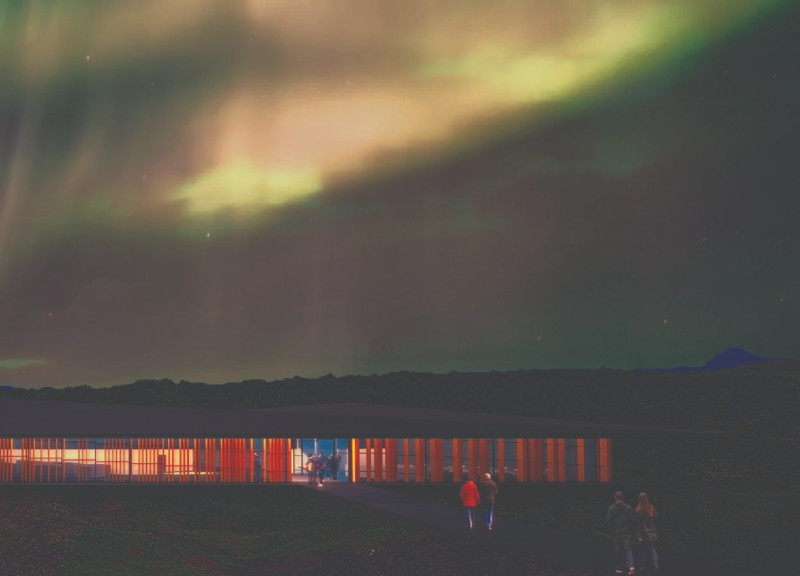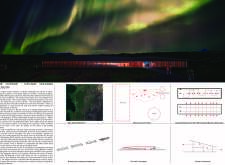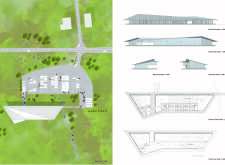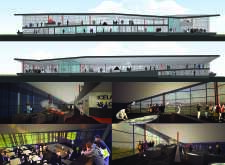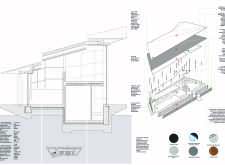5 key facts about this project
The Iceland Volcano Museum is located in the Myvatn region of Iceland, offering a unique experience centered around the area's volcanic landscape. The museum functions as an educational space, designed to create a direct relationship between its exhibitions and the natural surroundings. It moves away from the traditional museum layout, opting instead for a design that emphasizes interaction with the environment, inviting visitors to explore the geological heritage of this remarkable location.
Architectural Concept
The design of the museum aims to connect visitors with the landscape. As people enter, they notice the upward slopes that guide them through different areas of the building. This design approach encourages exploration and discovery, allowing guests to appreciate the interwoven narratives of the exhibits and the geology of Myvatn. The flow is structured yet open, facilitating movement while inviting curiosity.
Interaction with the Landscape
Viewing platforms within the museum provide communal spaces where visitors can take in the stunning surroundings. These platforms not only enhance the view but also link the internal exhibition content with the external landscape. Projections and text on the glazed façade enrich visitors' understanding of the area’s geological features, creating a holistic experience that showcases both the building and its natural context.
Dynamic Spatial Relationships
Inside the museum, an open floor plan supports a variety of functions and encourages adaptability. This layout is not only practical but also fosters community engagement. The building's design uses changes in ceiling heights to create a feeling of spaciousness, reflecting the natural topography outside. This connection makes the experience of moving through the museum feel less like a journey through a static exhibit and more like an exploration of the environment.
Materiality and Form
The materials used in the museum's construction play a significant role in its design. The roofing employs aluminum in a standing seam configuration, providing durability and complementing the natural palette of the surroundings. Reinforced concrete forms the structural foundation, ensuring stability for different uses within the museum. The choice of materials reflects the rugged qualities of the Icelandic landscape, grounding the building in its environment.
The façade incorporates a system of louvres that offers varying views of the northern landscape. As visitors progress through the museum, these openings create a sense of anticipation and discovery. Each design element is purposefully integrated to maintain a respectful relationship with the Myvatn region while underscoring the area's geological significance.


